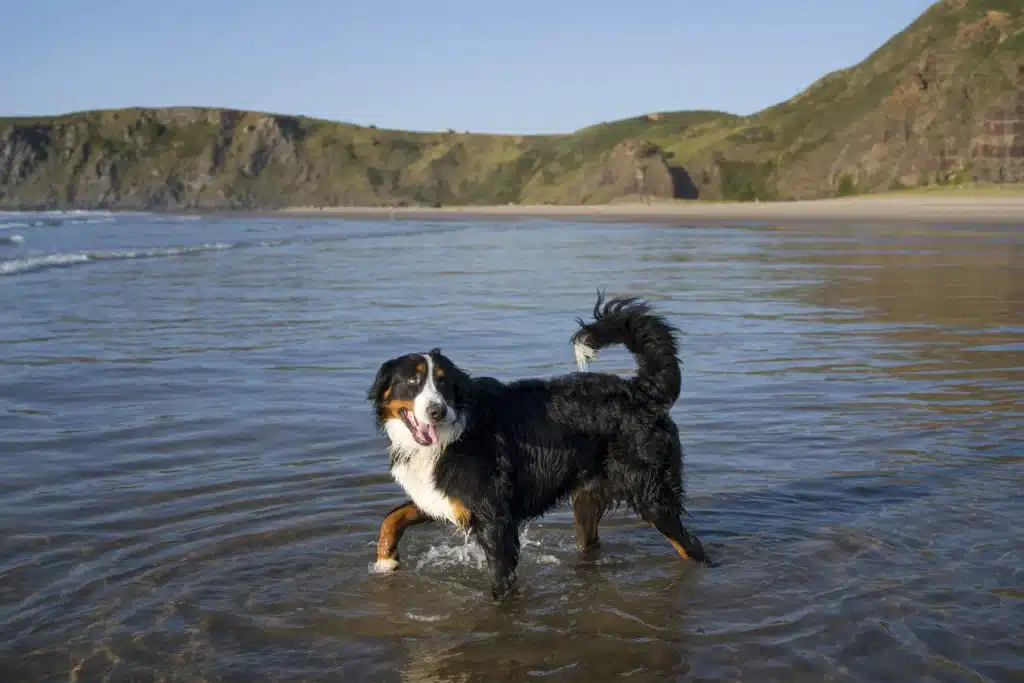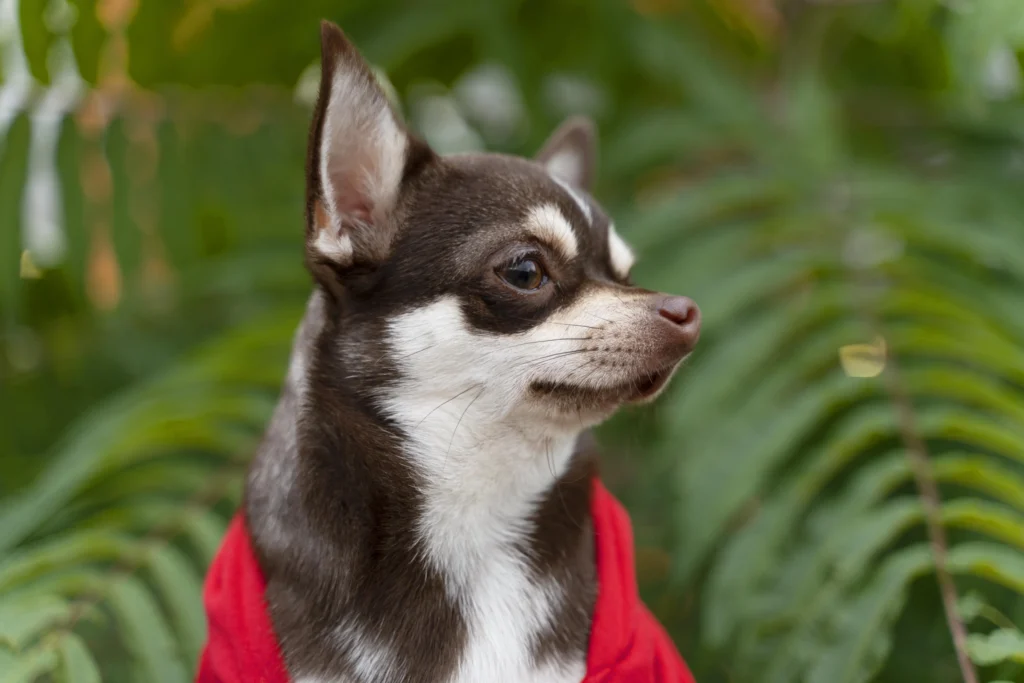The Newfoundland dog is one of the gentlest giants of the canine world and one that many people all over the world adore. The Newfoundland, with its brown penetrating eyes, its waterproof coat, and its almost human-like understanding, has gained a name not only as an excellent companion but also as one of the finest natural water rescue dogs of all time.
These dogs are the result of breeding processes that started in the rocky and windy shores of Newfoundland in Canada, the breed was raised to work with the fishermen, hauling nets, picking up equipment, and rescuing victims in the frozen water. They are nowadays remembered with admiration because of their courage, smartness, and uncompromising gentleness.
We will discuss all things about the Newfoundland: its intriguing background and personality, its care and grooming, its training, and why the breed has been a heart-melting breed in many parts of the world.
Breed Overview
| Characteristic | Details |
| Origin | Newfoundland, Canada |
| Breed Group | Working Dog |
| Height | 26–28 inches (females), 28–30 inches (males) |
| Weight | 100–150 lbs (45–68 kg) |
| Coat | Thick, double coat (water-resistant) |
| Colors | Black, Brown, Gray, and Black & White (Landseer) |
| Temperament | Gentle, patient, loyal, intelligent |
| Average Lifespan | 9–10 years |
| Purpose | Water rescue, draft work, companionship |
History and Origins of the Newfoundland Dog
The history of Newfoundland is as full as the waters that it used to patrol. This breed was adopted by the fishermen of the region of Newfoundland, Canada, as a necessary auxiliary to the fishermen, and grew out of the rough seashores of the land. These dogs were used by the early settlers and indigenous people to drag heavy fishing nets over icy waters, carts with fish, and even to drown sailors.
Historians think that the Newfoundland originated as a mixture of the native Canadian working dogs and the European mastiff-like breeds that were introduced by the explorers in the 16th and 17th centuries. A hybrid was formed, which was a strong and water-loving dog with unmatched endurance and intelligence.
By the 18th century, sailors and travelers were hearing reports of these dogs performing daring rescues. In England, the breed gained fame following the works of the 19th-century artist Sir Edwin Landseer, who painted the blood type in black and white and gave it its current name, Landseer Newfoundland.
The Newfoundland is still utilized in water rescuing in portions of Europe and Canada even today, and as such, it has a centuries-old tradition of saving lives.
Appearance and Size
The Newfoundland’s appearance is a harmonious blend of power and grace. Their large size is balanced by a soft, expressive face and gentle eyes.
Height and Weight
- Males: 28–30 inches (71–76 cm)
- Females: 26–28 inches (66–71 cm)
- Weight Range: 100–150 pounds, with some males exceeding 170 pounds
Build and Coat
Their dense double coat—comprising a coarse, oily outer layer and a soft undercoat—protects them from freezing water and cold air.
Color Varieties
- Solid black (most common)
- Brown
- Gray
- Black and White (Landseer)
Their large, webbed paws and strong hindquarters make them superb natural swimmers. The tail, long and muscular, acts as a rudder in water.
Temperament and Personality
Few breeds rival the Newfoundland’s temperament. They are often described as “gentle giants,” and rightly so. Despite their size, they are affectionate, calm, and loyal companions.
Gentle and Loving
Newfoundlands are naturally gentle, especially to children. This has given them the name of “nanny dogs,” given that they appear to be naturally protective and tolerant towards the young.
Calm but Watchful
They are usually silent and watchful and only bark when there is a need. They are not violent in their character but will never be afraid to stand between their loved ones and harm.
Affectionate Family Members
Newfies demand human contact. They enjoy spending time with their family the most and cannot stand working long hours on their own. They attach themselves and do well in a setting of love and engagement.
Is the Newfoundland a Good Family Dog?
Yes, absolutely. The Newfoundland excels as a family companion. Their gentle demeanor and high tolerance make them wonderful with children, seniors, and even other pets.
However, because of their sheer size, it’s important to supervise interactions with small children. Their excitement or affection can easily knock over a toddler, even without meaning to.

If you can handle the drool and shedding, a few breeds are more loving or loyal.
Caring for a Newfoundland
Owning a Newfoundland is a rewarding experience—but it comes with commitment. Their grooming needs, dietary requirements, and exercise demands require consistent attention.
Grooming and Coat Care
A Newfoundland’s thick, water-repellent double coat is both beautiful and demanding.
Brushing
- Wash the brush every 2-3 times a week to avoid hair that gets tangled.
- Shedding seasons (spring and fall). Daily brushing is the answer to the heavy coat blow.
Bathing
- The bath should be taken once or twice a month or as required—do not bathe too save the natural oils that cover their coat.
- They are more inclined to moderate exercise.
Drool Management
Drooling is part of the Newfie charm. Keep towels handy for their famous “Newfie slobber,” especially after meals or drinks.
Exercise Requirements
Despite their massive size, Newfoundlands are not high-energy dogs. They prefer steady, moderate activity.
Ideal activities include:
- Daily walks
- Swimming (they love it!)
- Cart pulling or light drafting
- Hiking in cool weather
Puppies should not overexert themselves; otherwise, this will cause problems with joints. In the initial stages of growth, short but slow sessions of exercise are the best.
Training and Socialization
Newfoundlands are smart and willing to please, and are also strong-willed. Socialization and positive reinforcement at an early age are necessary.
Training Tips
- Begin training early enough.
- Use compliments, games, and sweets—never hard corrections.
- Leash manners need to be taught early because the strength of these manners can easily overwhelm an untrained owner.
- Introduce them to a diversity of people, sounds, and experiences during puppyhood so as to develop confidence.
They take time and respond well to training and turn out to be obedient and peaceful adults.
Health and Lifespan
The Newfoundland life expectancy is at 9-10 years on average. Being a giant breed, they are likely to face a number of health issues, but risks can be reduced through responsible breeding and attentive care.
Common Health Issues
1. Gastric Dilatation-Volvulus (Bloat)
An emergency that is life-threatening in which the stomach is twisting, trapping the gas.
Symptoms:
- Restlessness
- Swollen abdomen
- Unproductive retching
- Collapse
Prevention:
- Eat two smaller meals in place of one big meal.
- Avoid exercise immediately before and after meals.
- Consider a preventive gastropexy surgery (attaching the stomach to the body wall).
2. Hip and Elbow Dysplasia
Newfoundland is prone to hip dysplasia because of its large size. Genetic malformation of the joints causes pain, stiffness, and arthritis.
Management:
- Maintain a lean body weight.
- Use joint supplements (omega-3s, glucosamine, chondroitin).
- Controlled, low-impact exercise (like swimming)
3. Osteosarcoma (Bone Cancer)
A type of cancer that is prevalent among big dogs. The initial symptoms are limping and swelling of the limbs. The treatment could include surgery and chemotherapy.
4. Dilated Cardiomyopathy (DCM)
A cardiac condition that results in reduced pumping and a possible heart attack. Early detection can be facilitated by regular checking of the vet and cardiac checkups.
5. Eye and Ear Issues
They have loose, floppy ears that are able to trap moisture, hence infections. Wipe with ear solutions suggested by the vet.
Sometimes eye discharge is natural, but when there is too much tearing or any redness, then it is necessary to visit the veterinarian.
Nutrition and Feeding Guidelines
Dietary balance is a key to Newfoundland health and life expectancy.
Puppy Nutrition
The growth of the Newfoundland puppies should be slow to avoid damage to the bones and joints. Select big-breed puppy food, which regulates the contents of calcium and phosphorus.
Adult Feeding
Eat two times a day, not a big meal, to avoid the risk of bloat.
Seek foods of good quality that meet AAFCO standards with:
- Protein: 22–26%
- Fat: 12–18%
- Added omega-3s and joint support ingredients
Do not overfeed them; additional weight puts their bodies and joints under stress.
Feeding Tips
Slow-feed bowls, or puzzle feeders, should be used in order to avoid gulping.
They should supply fresh water at all times..
Avoid feeding before or after vigorous exercise.
Living with a Newfoundland
Space Requirements
Due to their size, Newfies need ample space—ideally, a house with a fenced yard. They’re not suited to apartment living.
They like relaxing at home yet have to spend time outdoors in order to exercise and stimulate their minds.
Climate Considerations
They survive well in the cool climates and may suffer in heat. Offer shades, air conditioning and lots of water in hot seasons. Do not shave their coat; it enables them to keep cool.
Behavior and Personality at Home
With Children
Newfoundlands are supposedly kind to children. They are also good family pets since they are very patient and tolerant with proper supervision at all times, considering their size.
With Other Pets
Otherwise amicable to other dogs, even cats, in case they are properly trained. They are protective of every single member of the family.
Separation Anxiety
Their loyalty dictates that they do not like spending a lot of time alone. Anxiety due to being away can be minimized with the help of interactive toys and gradual desensitization.
Fun Activities for Newfoundland’s
- Swimming—Their favorite pastime
- Cart pulling/drafting—Great physical outlet
- Search and rescue—Many participate in water rescue training.
- Work with therapy dogs—therapy dogs work best in hospitals and schools.
- Hiking—This is slow and gradual exercise, which strengthens.
Grooming Essentials
Coat Maintenance
Brush two times a week all year round, and more often in shedding seasons. Optimal results are achieved by use of a slicker brush or undercoat rake.
Bathing
Baths once every month are adequate. Swimming: Rinse under clean water to get rid of salt/chlorine.
Nail Trimming
Trim nails every 3–4 weeks. Nails are very long, which may lead to discomfort and bad posture.
Dental Care
Brush their teeth 2 or 3 times a week and use dental chews to avoid the development of plaque.
Are Newfoundlands Easy to Train?
Yes and no. Newfoundlands are intelligent but independent thinkers. They respond best to gentle, reward-based training methods.
They take ages to grow up, and consequently, patience is paramount. Regular training at an early age also avoids the development of behavioral problems since they become huge at their adult size.
Common Myths About Newfoundland’s
Myth 1: “They’re lazy.”
Truth: They’re calm, not lazy. They save energy to do something significant.
Myth 2: “They’re outdoor dogs.”
Truth: They miss family time, and they are supposed to be inside with their people.
Myth 3: “They can’t live in warm climates.”
Truth: With proper care, they can—though they prefer the cold.
Finding and Adopting a Newfoundland
In finding a Newfoundland, a good breeder or breed-specific rescue is to be used.
Reputable breeders:
- Conduct health testing for hips, elbows, and heart.
- Provide clean environments and socialized puppies.
- Offer lifelong breed support.
Adoption from Newfoundland rescues can also be a deeply rewarding experience—many adult dogs need loving homes.
Newfoundland Quick Facts
- Lifespan: 9–10 years
- Energy Level: Moderate
- Good with Kids: Excellent
- Drooling Level: High
- Grooming Needs: Moderate to High
- Trainability: Medium (strong-willed but eager)
- Ideal Owner: Patient, experienced, and active
Conclusion: A Heart as Deep as the Ocean
It is the kind of devotion, courage, and kindness that the Newfoundland dog represents. It has developed into a favorite family member that sacrifices its heart to protect the elements and save lives because that is what it was bred to do.
The Newfie hauls nets in frozen water or lies lazily by a child; he does it all quietly with quiet dignity. Being a possessor is to live a life of loyalty, laughter, and love—wrapped in fur and a bit of drool.
The Newfoundland is the veritable water-saver, the lighthouse of the sea, and the friend such as no other.


